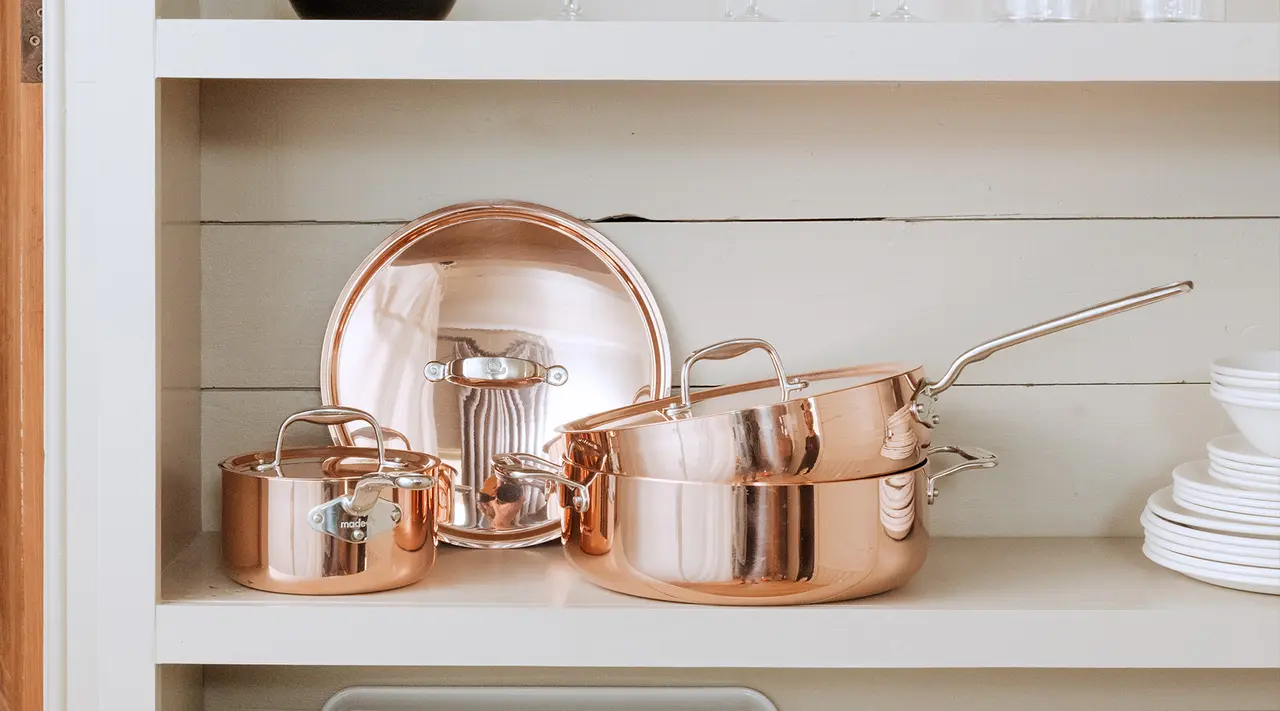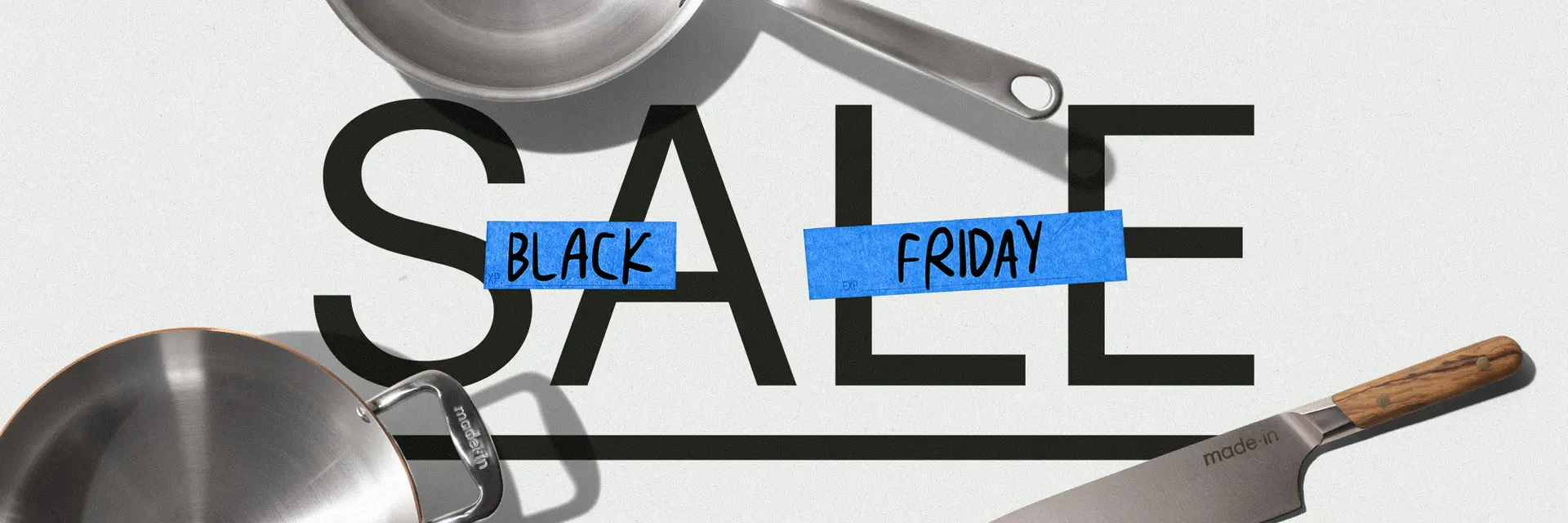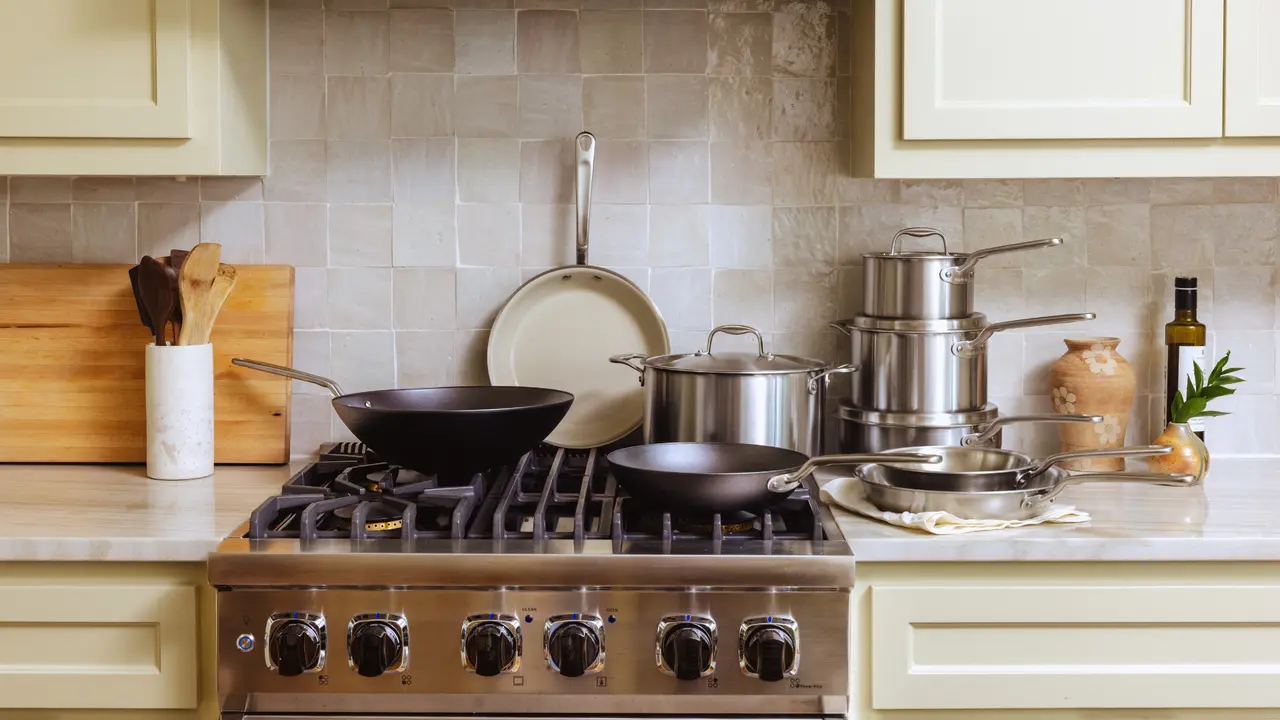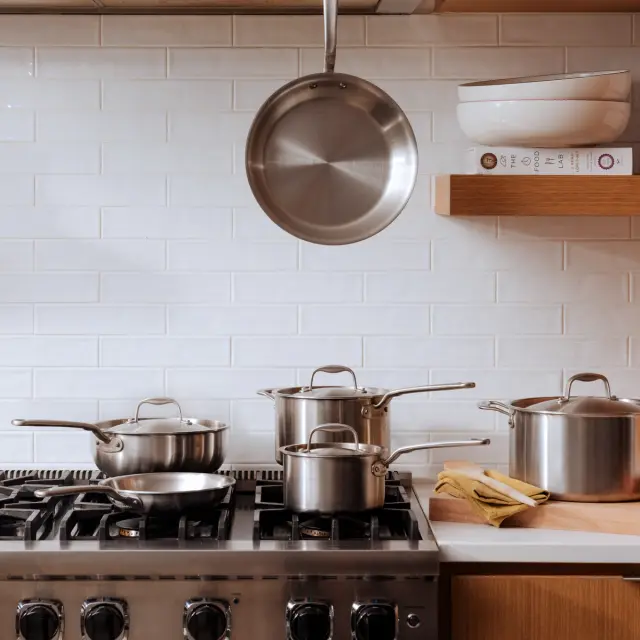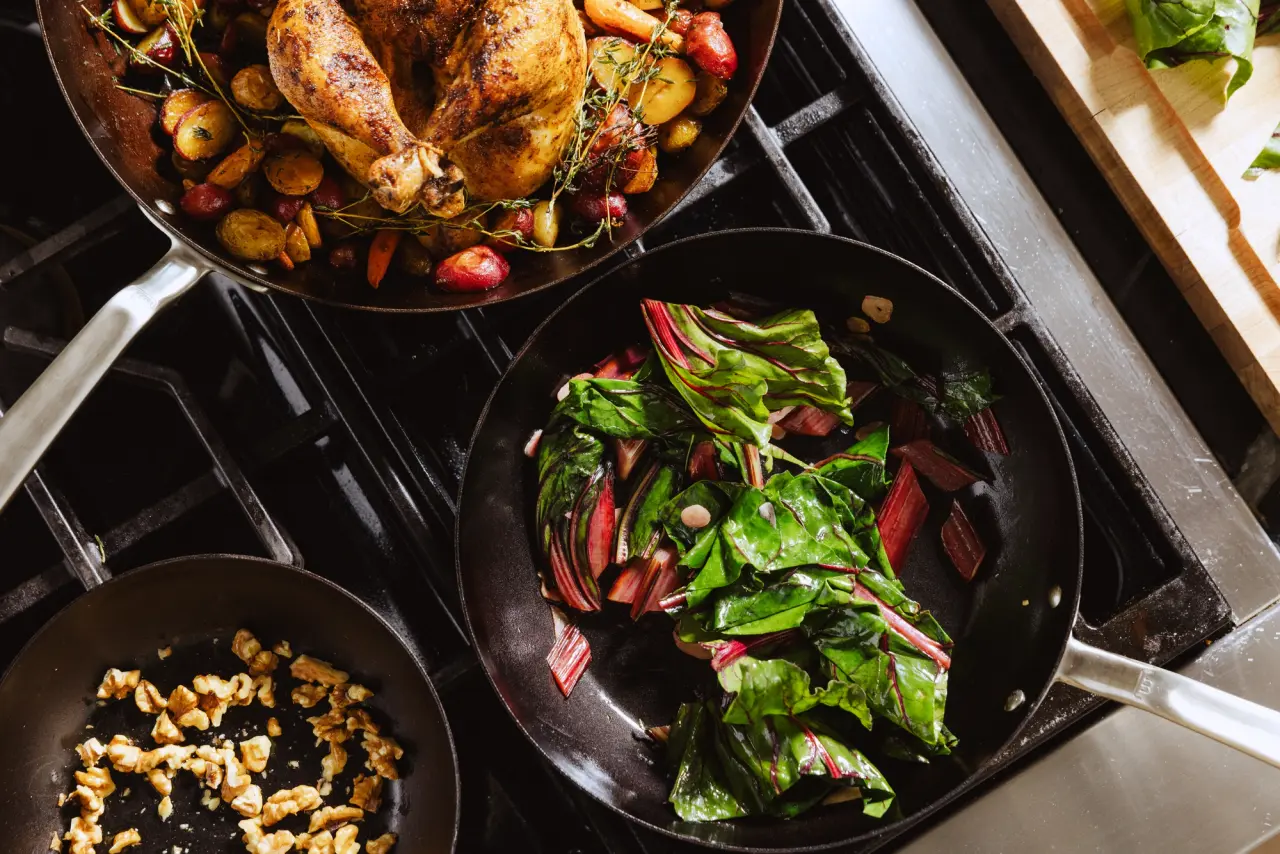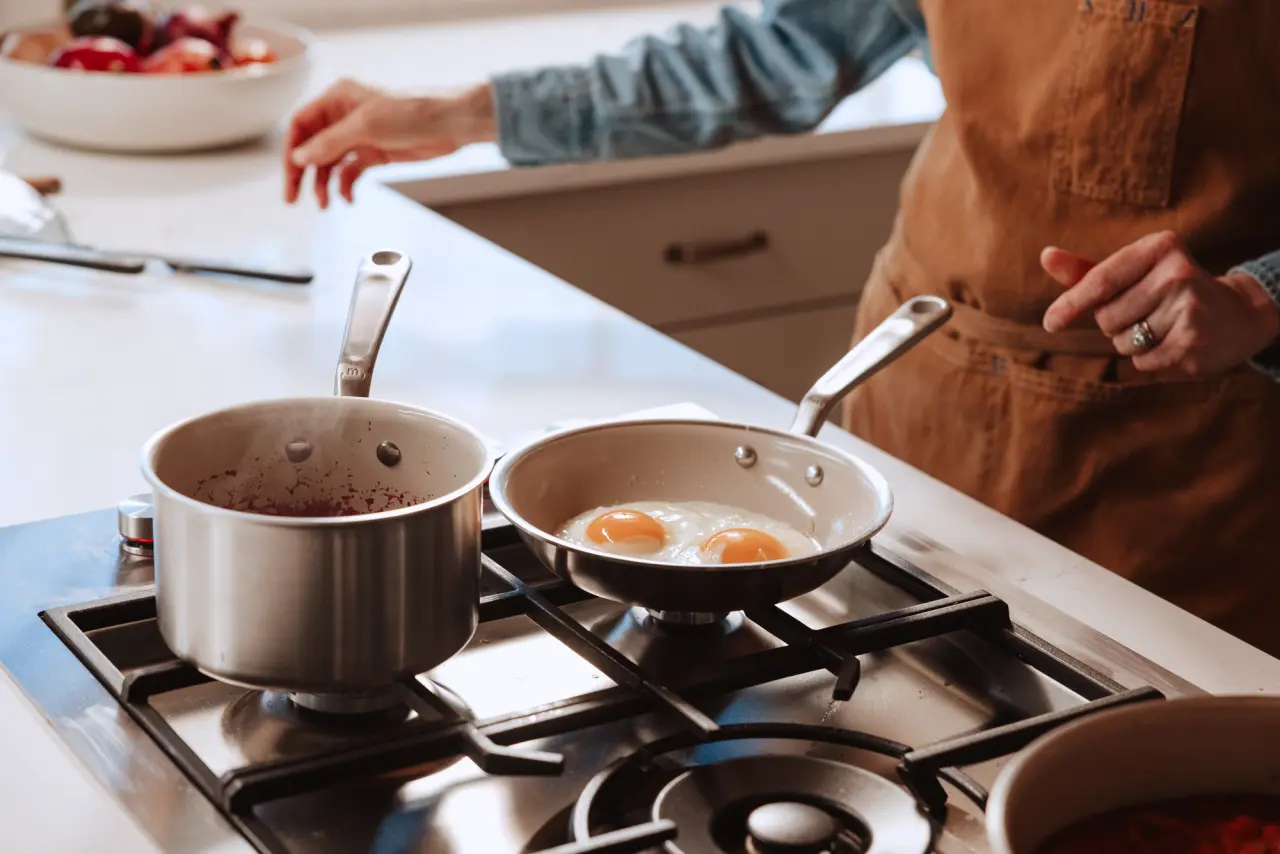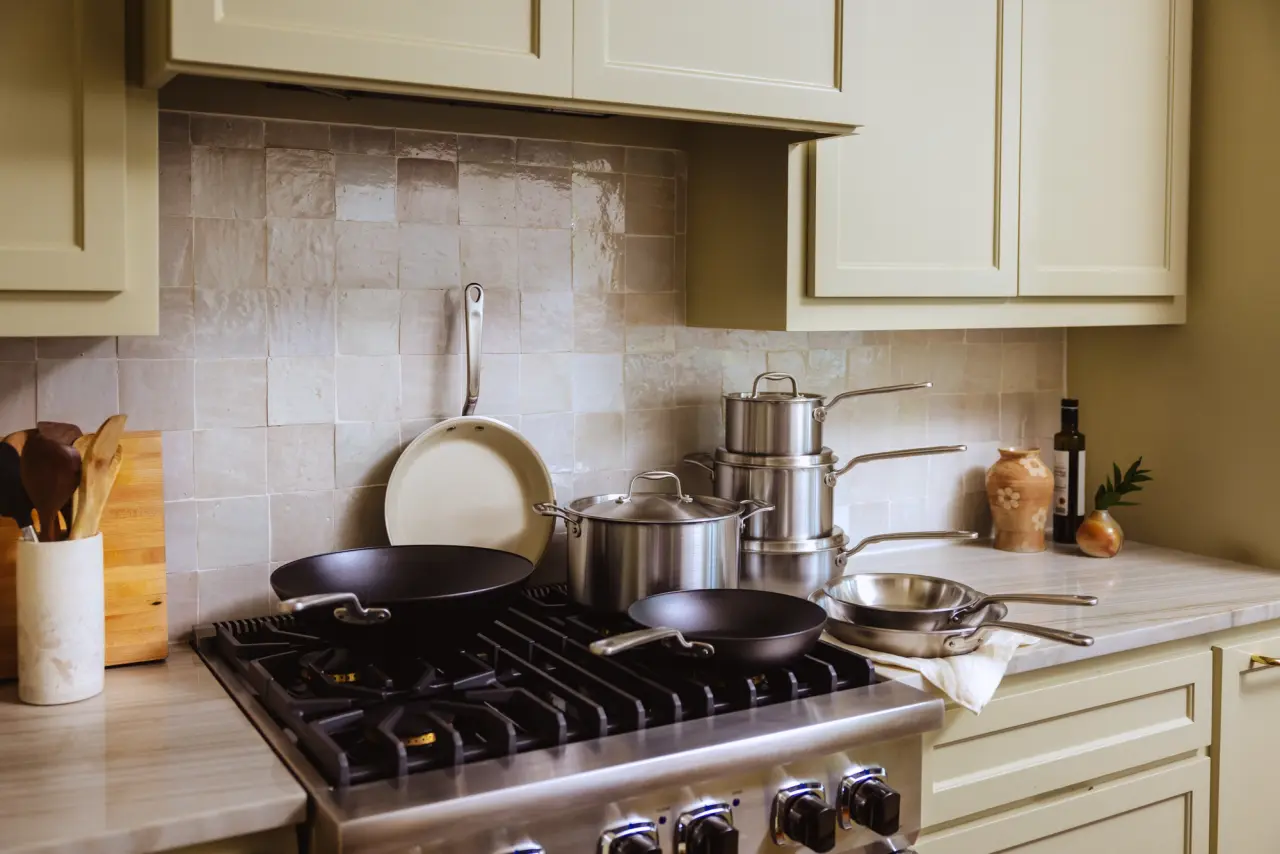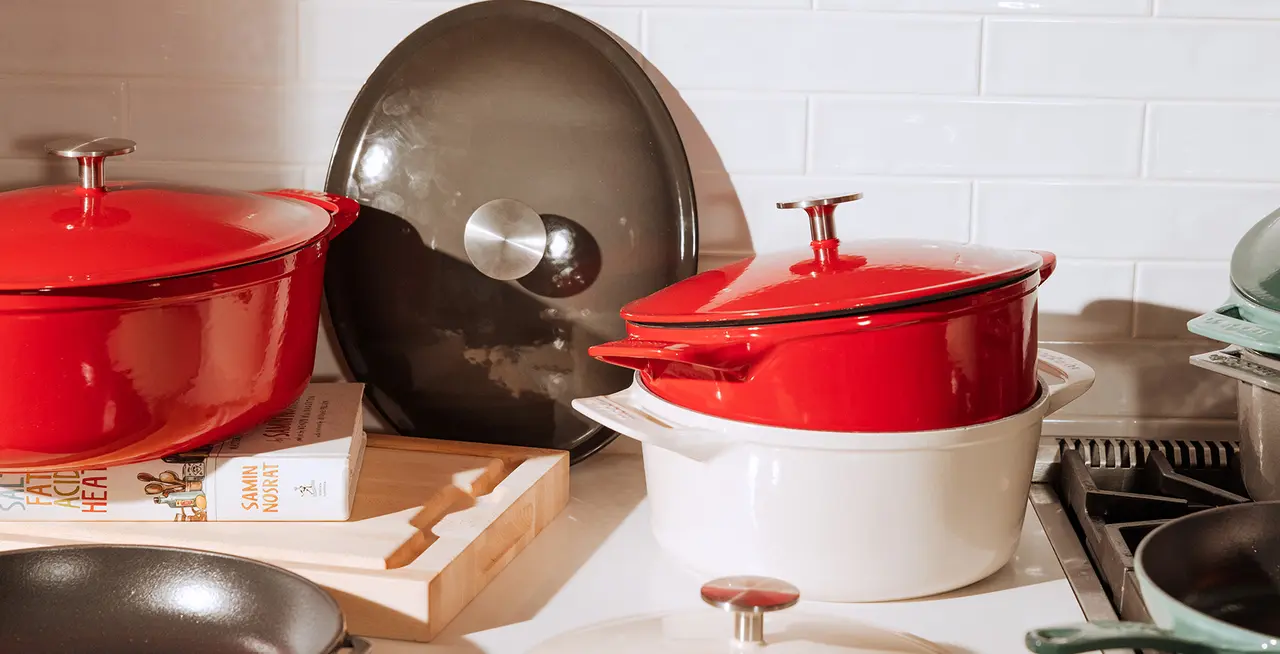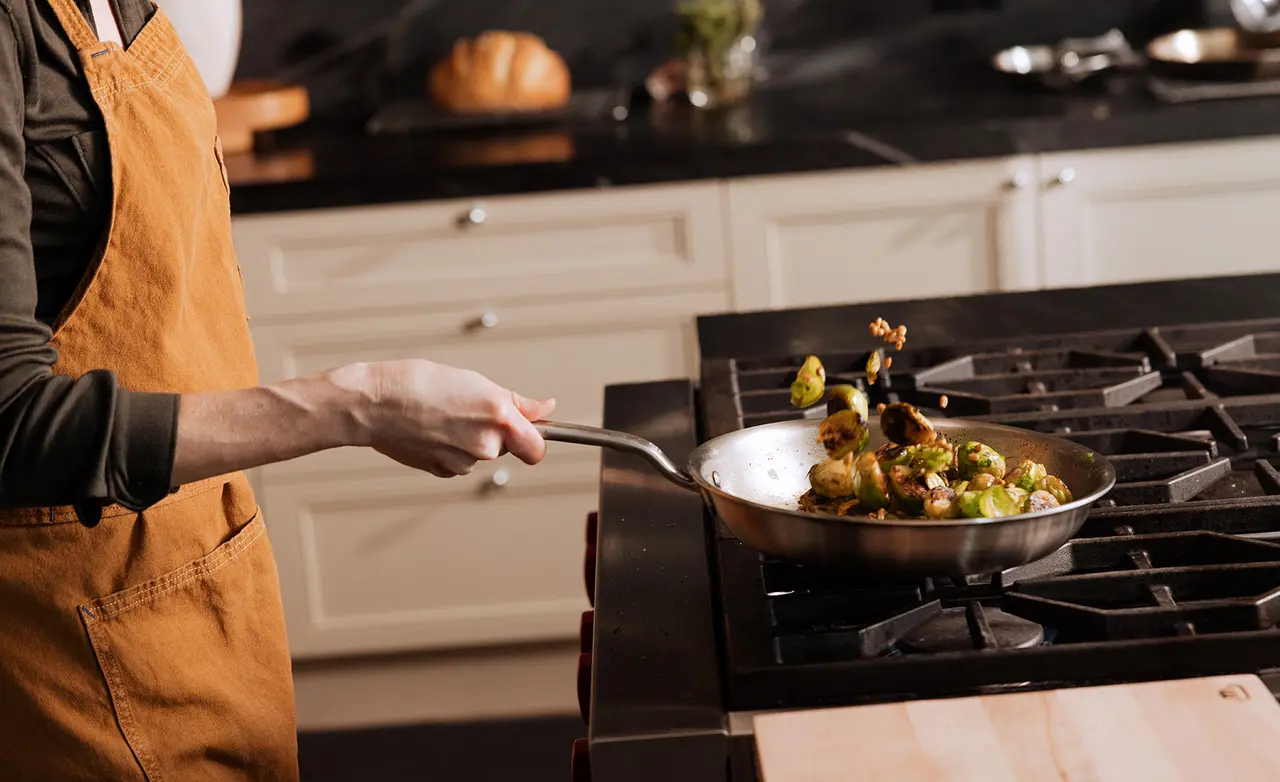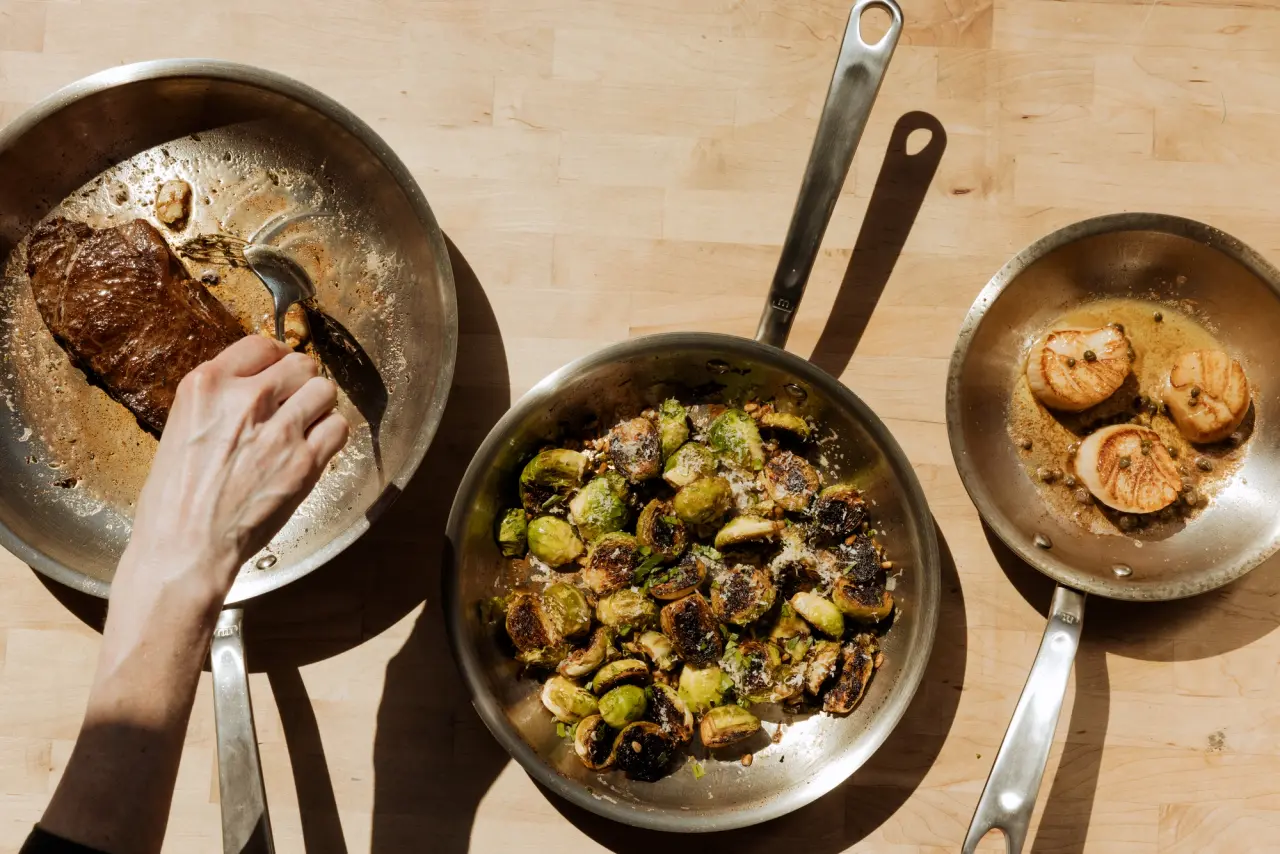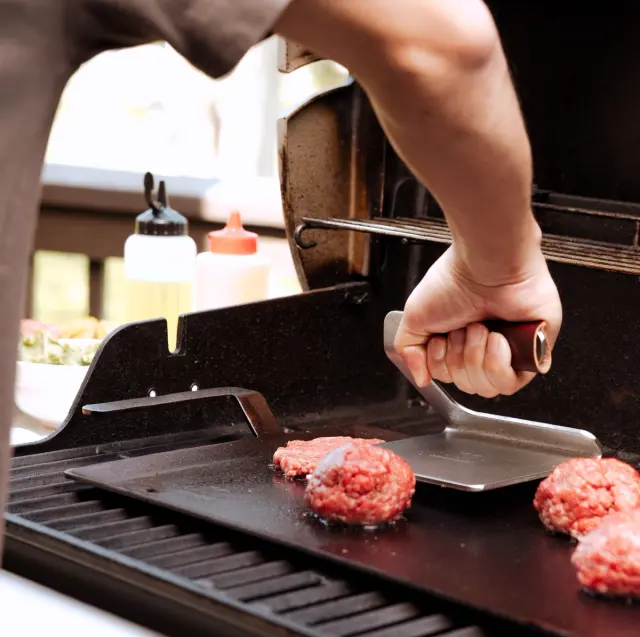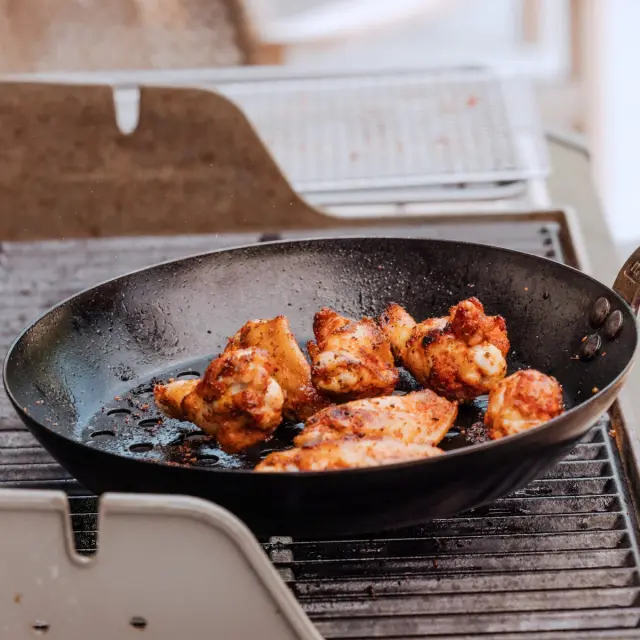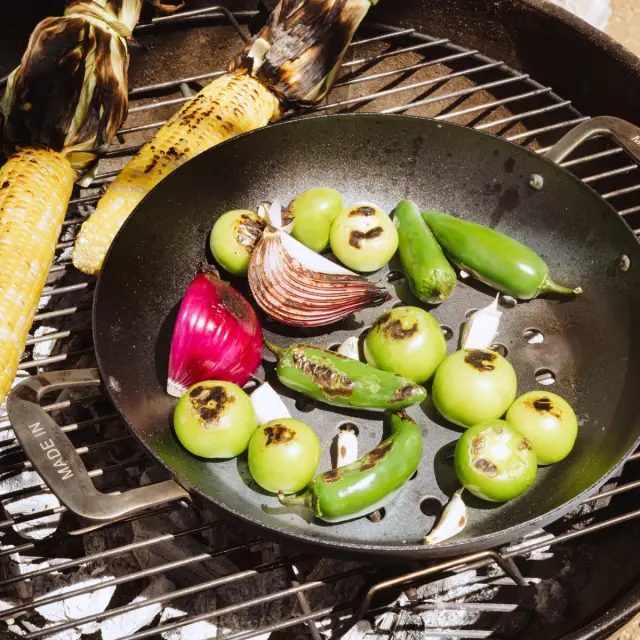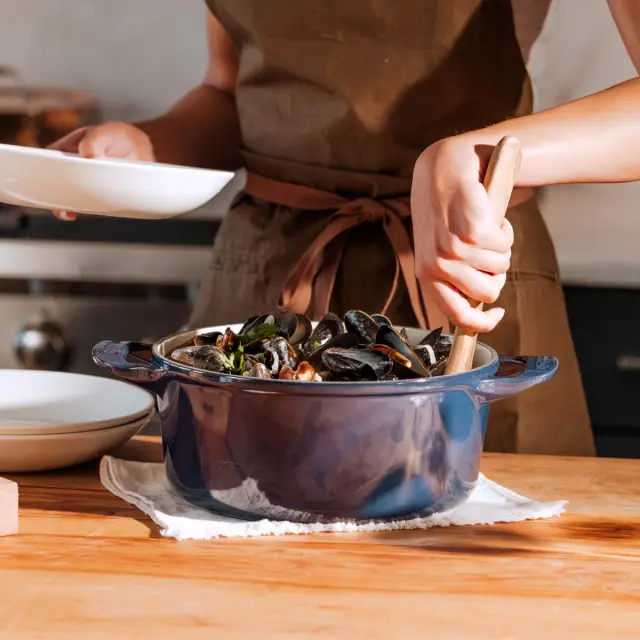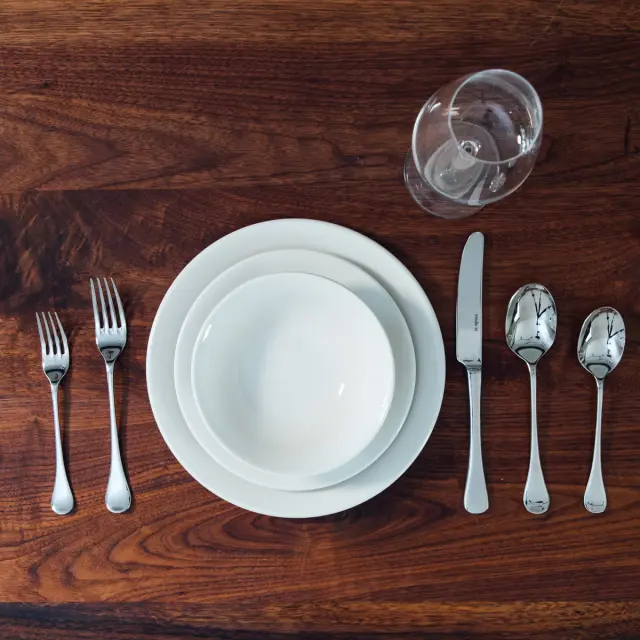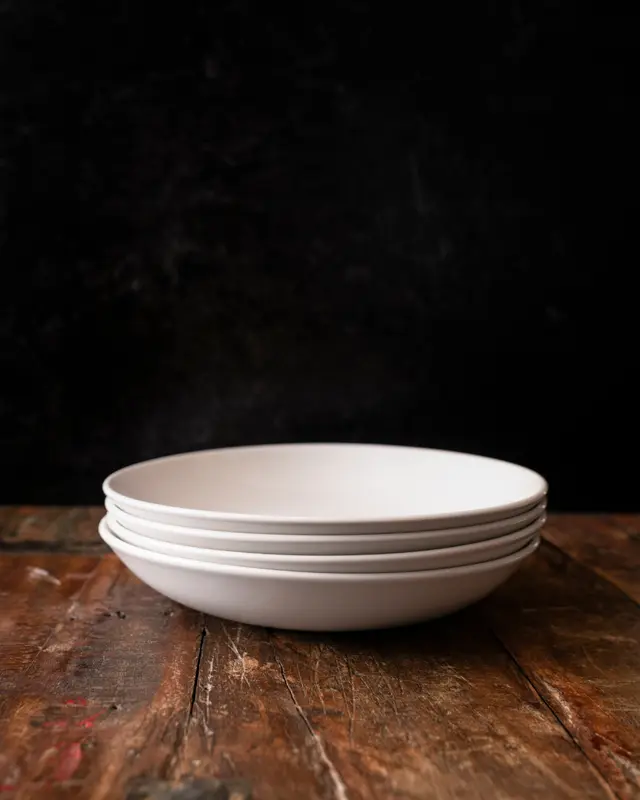To help you get the best results with your Made In copper pots and pans, we’ve gathered—and answered—our most commonly asked questions.
- What Are the Benefits of Copper Cookware?
- Is Copper Cookware Safe to Cook With?
- What Kind of Lining on Copper Cookware is Best—Tin or Stainless Steel?
- How Often Does Copper Cookware Need to be Re-Lined or “Re-Tinned”?
- How Do You Cook with Copper Cookware?
- What Dishes Are Best Suited for Copper Cookware?
- What Should I Look for in Good Quality Copper Cookware?
- What Cooking Surfaces Can Be Used with Copper Cookware?
- Is Copper Cookware Oven Safe?
- Can Copper Cookware Be Put in the Dishwasher?
- What’s the best way to clean copper cookware?
- Why is Copper Cookware Expensive?
What Are the Benefits of Copper Cookware?
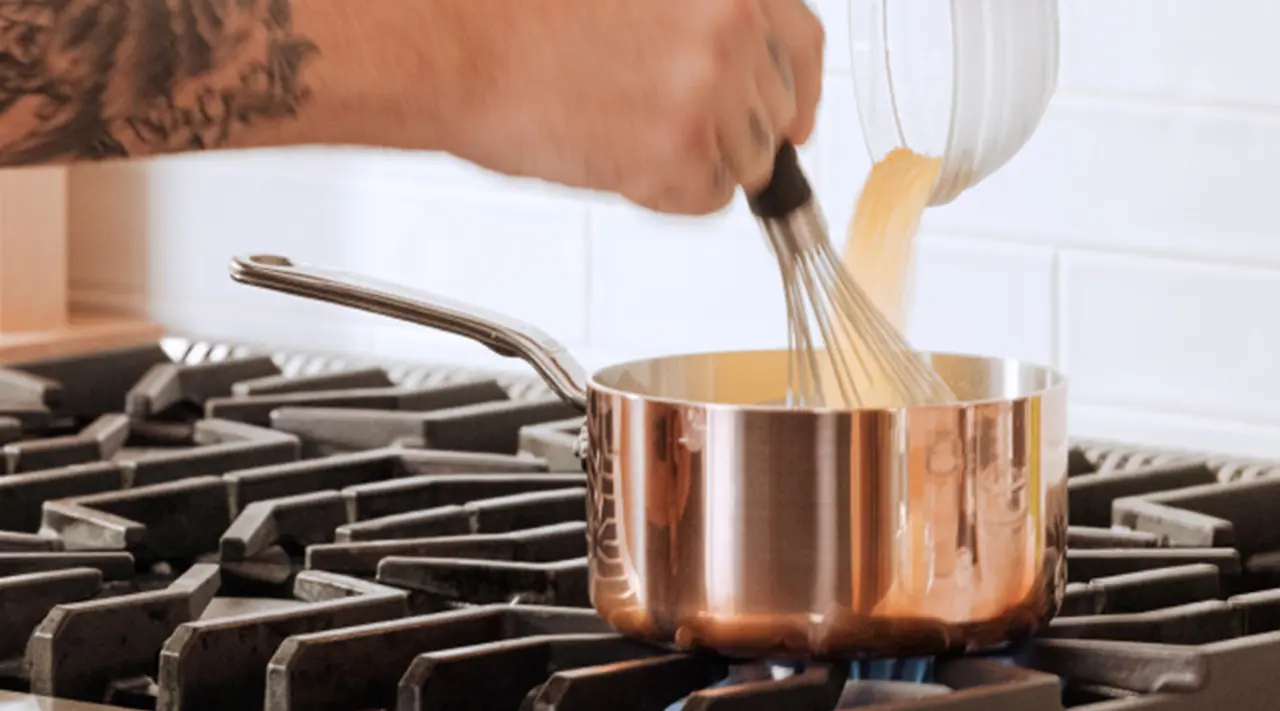
Copper doesn’t just look beautiful—it performs beautifully, whether you’re searing delicate fish or simmering jam. Its biggest advantages are precision, quick response to temperature changes, and straightforward upkeep.
- Conductivity and Heat Distribution: Copper heats faster and more evenly than stainless steel, making it ideal for delicate foods like fish fillets or caramel, where cutting the heat instantly prevents burning.
- Durability and Longevity: Though it gleams like jewelry, copper is tougher than it looks. Even pans that develop verdigris (the bluish-green patina) can be restored. Many cooks embrace the natural patina as proof of a pan well used..
- Aesthetics and Elegance: Beauty is part of copper’s appeal. It’s increasingly rare in professional and home kitchens, which gives it a certain mystique. And there’s history in your hands: copper is the oldest metal humans have ever worked.
Is Copper Cookware Safe to Cook With?
The short answer is yes–when it’s lined. Copper is reactive, so unlined pans can leach metal into food, especially with acidic ingredients.
- Unlined Copper: Because bare copper can leach into food, especially when cooking acidic ingredients, this cookware is not safe for regular use. A single meal might not cause illness, but over time, copper buildup in the body can lead to toxicity. The same caution applies to unlined copper vessels—beautiful as they are, they shouldn’t be used for storing or serving food. Antique copper looks charming, but it shouldn’t be used for food.
- Lined Copper Cookware: Modern copper cookware is typically lined with a non-reactive metal like stainless steel or tin (or even sterling silver), creating a safe barrier between the food and the copper. All of Made In’s Copper Cookware is stainless-lined and made without PFAS, PFOA, PTFE, Lead, Cadmium, Aluminum, and BPA.
What Kind of Lining on Copper Cookware is Best—Tin or Stainless Steel?
A non-reactive lining creates a safe barrier between your food and your copper cookware. The two main options are tin and stainless steel.
- Tin: Naturally slick, great for delicate foods, but soft and prone to wear. Tin has a low melting point (around 450F), so you must avoid very high heat and aggressive use. Over time, tin can get scratched or wear out and must be re-tinned by a professional.
- Stainless Steel: Durable, high heat-tolerant (up to 800F) and low maintenance—no re-tinning necessary. Made In uses stainless steel linings—safe, modern, and built for decades of use.
How Often Does Copper Cookware Need to be Re-Lined or “Re-Tinned”?
- Tin-lined copper: Depends on use—light home cooking may last 10–20 years, heavy use much less. Once copper shows through, it must be re-tinned.
- Stainless-lined copper: Never needs re-tinning. Made In’s Copper Collection is designed to last without replacement.
How Do You Cook with Copper Cookware?

Cooking with copper is all about control. The cooking experience is similar to stainless steel because the surfaces are the same material, but because copper heats quickly and responds instantly, keep the following in mind:
- Preheat Gently: Start low and increase gradually; medium to medium-high is usually plenty.
- Use Enough Fat: Always add butter or oil before ingredients to create a buffer and prevent sticking or scorching.
- Stay Attentive: Copper reacts quickly—don’t walk away from delicate foods like eggs, fish, or caramel.
- Use Wood or Silicone Utensils: Avoid scratching the lining with metal tools.
- Match the Pan to the Task: Use copper for sauces, custards, sugar work, or quick sears where control matters. For long braises or aggressive high-heat searing, try Stainless Clad, Carbon Steel, or Enameled Cast Iron cookware.
What Dishes Are Best Suited for Copper Cookware?
Copper shines when you need control and consistency.
Best Uses:
- Chocolate and Caramel: Melt chocolate gently without scorching; cook sugar to precise stages for candy, toffee, or caramel.
- Delicate Sauces: Hollandaise, béarnaise, or reductions where quick heat adjustments prevent splitting or curdling.
- Custards and Pastry Creams: Even heat keeps eggs from scrambling.
- Fish and Seafood: Quick, controlled sears on fillets or scallops.
- Jam and Confections: High sugar content prevents acid reaction, making copper the traditional choice for jam making.
With stainless-lined copper (like Made In’s), you can also cook acidic foods—tomatoes, citrus, wine—without worry.
What Should I Look for in Good Quality Copper Cookware?
- Thickness: Look for copper cookware that is 2mm thick, like Made In’s Copper Collection. This is the sweet spot where you get excellent heat control without the pan becoming too heavy. Anything thinner becomes more decorative than functional.
- Lining: The safest choice for copper cookware is lined cookware–either with stainless steel or tin. Stainless is more durable and maintenance-free, while tin has a silkier cooking surface but requires greater care.
- Construction: Avoid pans that are just copper-plated. Quality copper cookware is solid copper with a bonded lining, like Made In’s pieces.
- Handles: Sturdy, riveted, stainless steel or bronze for balance; lightweight handles often signal cheaper construction.
- Reputation: Buy from trusted makers like Made In, known for professional-grade copper.
What Cooking Surfaces Can Be Used with Copper Cookware?
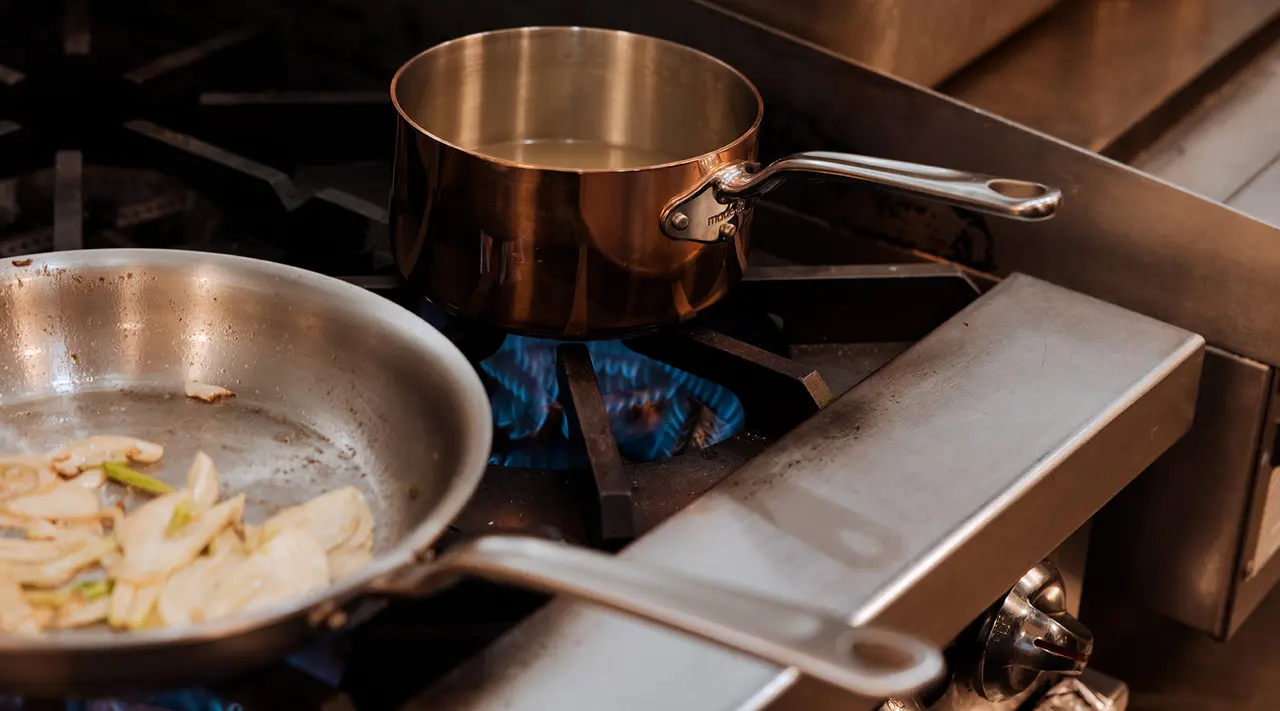
Copper works beautifully on gas and electric ranges. Made In’s Copper Cookware is not induction-compatible because pure copper isn’t magnetic. To check compatibility, touch a magnet to the base—if it sticks, it will work on induction.
Is Copper Cookware Oven Safe?
Yes. Made In’s Copper Cookware is oven safe up to 800F.
Can Copper Cookware Be Put in the Dishwasher?
No—always hand wash copper
What’s the best way to clean copper cookware?
- Interior: Copper cookware should never be placed in the dishwasher. Instead, clean the cooking surface of your cookware with a soft sponge, warm water, and gentle hand soap. Abrasive cleaning agents should never be used.
- Exterior: The exterior of copper cookware does not strictly require polishing, and not polishing it will allow it to naturally develop an aged patina. If you like to keep your copper as shiny and new as possible, use your preferred copper polish, a mixture of lemon juice or white vinegar and baking soda, or even ketchup in a pinch. Rinse, dry, and store dry to preserve the finish.
Why is Copper Cookware Expensive?
Copper itself is a costly raw material, and making cookware from it takes skilled craftsmanship. Good copper pans are at least 2mm thick, so they require a lot of metal, which drives up the price. On top of that, they need to be bonded with a lining (usually stainless steel or tin), fitted with sturdy handles, and finished by hand to ensure even thickness and durability.
Unlike cheaper copper-plated pieces, true copper cookware is built to perform at a professional level and last for decades. You’re paying not just for the beauty, but for the precision heating, longevity, and the labor that goes into producing each pan.
Ready to Shop?
Maybe you’re chomping at the bit to go pick up your first piece of copper cookware—or maybe your interest has just been mildly piqued. Either way, we know at least one of our French-made copper pieces will fit into your life, whether you’re a casual cook or a pro chef.
